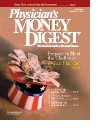Don't Place Bonds on a Golden Pedestal
It has been rumored that municipalbonds have fallen victim to PresidentBush's recent tax cuts and tax-exemptmunicipal bonds would sufferfrom the lower federal income taxrates, while competing taxable bondswould receive an advantage. As it turnsout, however, municipal bonds areoffering their best deals in years.
Tax-exempt, top-grade, AAA-rated,10-year municipal bonds currently yieldabout half as much as governmentbonds with similar maturities aftertaxes. Their current 2.8% yield compareswith 1.9% after taxes from USTreasuries (assuming 38% state and federaltaxes). Before taxes, they yieldalmost as much as US Treasuries. Theyshine even more when compared withdividend-paying stocks, which yield ameager 1.4% on average.
Risky Business
Note:
As with any investment, municipalbonds have their share of pitfalls. For example,issues backed by a single source of revenuecan be risky. Investing carefully is key.Choose municipal bonds that are rated bycredit agencies and backed by either thegovernment or revenues from essential services(eg, water or electricity). Avoid municipalbonds with long maturities. Ifyou buy the bonds direct, rather thanthrough a mutual fund, you can count ongetting all your capital back eventually.
Even if you exercise care in your investmentchoices, you still have to deal withthe possibility of rising interest rates.When interest rates rise, the value ofbonds fall. According to Jack Malvey ofLehman Brothers, "Interest rates are likelyto increase at some juncture over thenext year or year-and-a-half." And sincebond prices are at their highest levels inover a generation, they're more likely tofall in price than rise. Bonds are also vulnerableto an upturn in the economy andthe huge federal deficit.
Brave Investing
BusinessWeek
You shouldn't avoid bonds just becauseof risk. If you diversify, you can reduceyour bond portfolio's risk and still makemoney from your investments. Most portfoliosneed some bonds. Also, bonds holdvalue much better in bear markets thanstocks do. An article in notes that in 1994 (the worst year forbonds in the past 40) the Lehman BrothersAggregate Bond Index lost 2.9%—the S&P500 lost 22.5% in 2002.
Wall Street Journal
To ward off the threat from rising interestrates, a article recommendschoosing investments that offerthe principal protection of a money marketfund but pay higher yields. One optionis stable-value mutual funds, which currentlyyield an average 4.9%. Althoughthese funds are usually only availablethrough 401(k) plans, a small number ofretail funds are being offered to individualinvestors for IRAs.
Other options include long-term CDsand US Savings Bonds. Five-year CDs yield3.4%. Series I savings bonds currentlyyield 4.08%, while Series EE bonds arepaying 3.25%. If you're willing to take ona little more risk for higher returns, setaside half your bond portfolio for high-quality,short-term corporate and governmentbonds. Spread the other half of theportfolio among less conventional bondfunds. For more information on investingin municipal bonds, visit www.investinginbonds.com.
